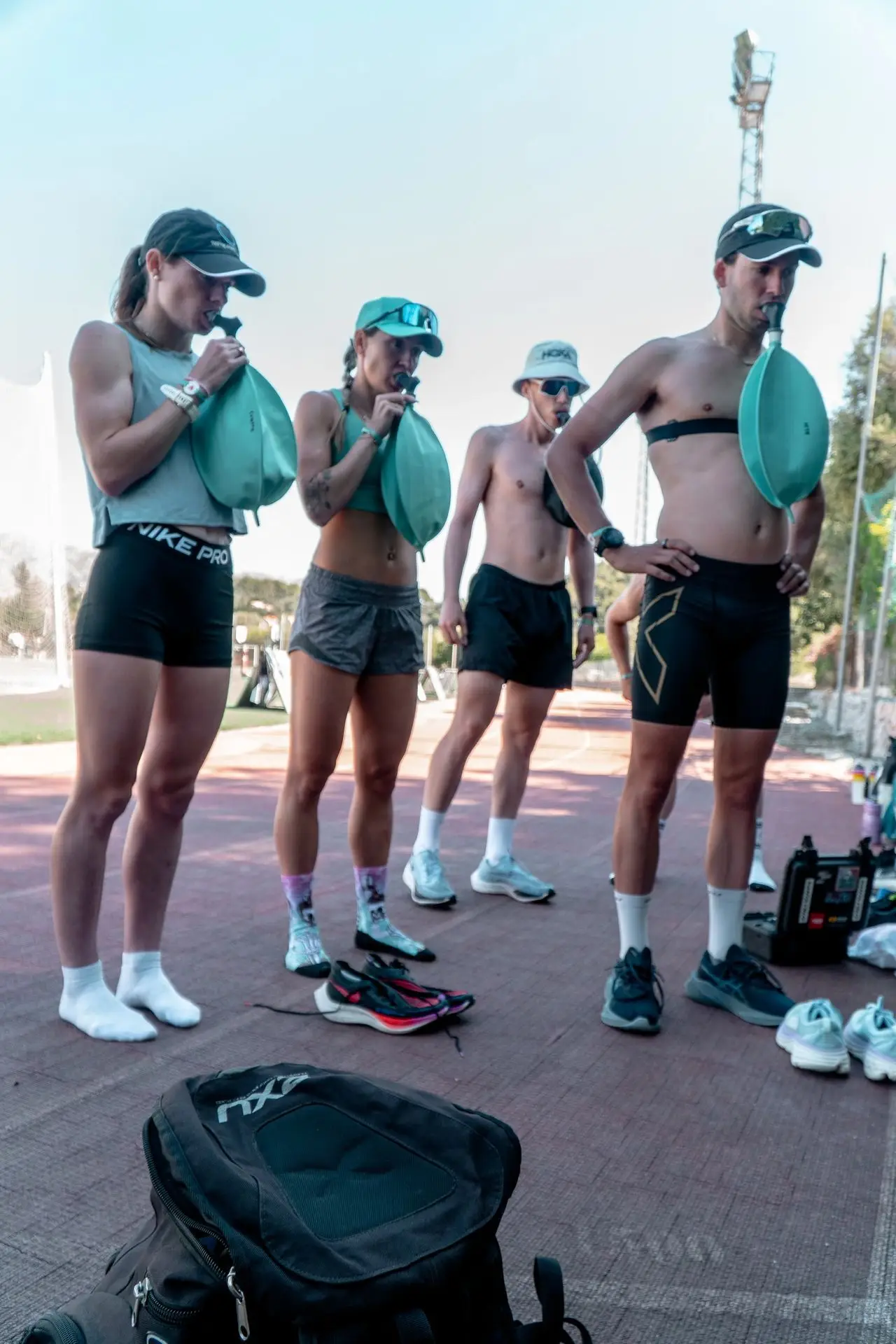by: Dr Andrew Sellars

Imagine reaching the peak of your workout, pushing your body to its limits, only to be held back by the breathlessness that leaves you gasping for air. This scenario is all too familiar for many athletes. However, training with the Isocapnic respiratory trainer is the key to overcoming this barrier. By maintaining constant levels of carbon dioxide while breathing, this training modality targets and strengthens the respiratory muscles, potentially alleviating the discomfort of “unsatisfied inspiration” and propelling athletes to new heights of performance.
A new study published at the end of March 2024 in the journal Medicine & Science in Sports Exercise examined the physiological factors associated with a condition called “Unsatisfied Inspiration.” This term describes the uncomfortable level of shortness of breath that some people experience during high-intensity exercise. The authors emphasize in the Introduction that their findings challenge common understandings of physiological limitations.
For over two decades, literature has suggested that respiratory limitations can reduce peak performance. Yet, many still believe the respiratory system is never a limiting factor in performance. Our understanding of the complexity of the human body and the interrelatedness of the six physiological systems (Cardiovascular, Respiratory, Neurologic, Musculoskeletal, Metabolic, Psychologic) is only just emerging. What we have argued over the years is that any one of these systems can limit human performance at any level.
To illustrate this, consider an older patient who has recently suffered a myocardial infarction, commonly known as a heart attack. In this case, a portion of the heart has been deprived of oxygen and has become ineffective at contracting, which propels oxygen-rich blood to the muscles. It is easy to understand in this specific case that exercise performance would be limited by the cardiac system, regardless of how strong the muscles are or how skilled a runner or cyclist the patient is.
Similarly, a patient who has suffered a recent musculoskeletal injury would not be expected to perform at their best if the injury affected their running gait or strength.
These two examples are extreme and are used only to demonstrate that any system can be limiting when examining an athlete working at high intensity. A small reduction in coordination or tight muscles restricting stride length could be the primary reason for not achieving performance goals. These small limitations are no different from what we have seen and measured in terms of cardiac and respiratory limitations. In fact, many of the limitations we have measured in our history with athletes at all levels indicate that cardiac and respiratory systems are not even evident unless we push athletes to high intensity.
The study on “unsatisfied inspiration” found that 34% of participants reported a high degree of respiratory discomfort during high-intensity exercise. This aligns well with our anecdotal evidence of the number of athletes who present with clear respiratory limitations to their performance.
In this study, these athletes were seen to have higher inspiratory constraints in terms of inspiratory capacity and inspiratory reserve volumes, while also demonstrating higher oxygen consumption, higher minute ventilation, and higher breathing frequency.
We believe there is a significant opportunity to design a study and a training plan specifically for this group of athletes to overcome these identified limitations and improve their performance.
Improving inspiratory reserve volumes may be as simple as enhancing coordination through education and awareness during training, while a shift in breathing dynamics alone may address the differences in oxygen consumption. It is not surprising that VO2 is higher in this group who are breathing faster and deeper to achieve their maximum output, as previous studies have found over 20% of cardiac output and metabolic demands are directed to the respiratory system at high intensities.
This is another fascinating study and a compelling reason to test and train the respiratory system for athletes at all levels.
Read the full study here.



